About Page Events
To view Skope IT page events monitored by the Netskope analytics engine, go to Skope IT > Events > Page Events .
The default Page Events page table information includes:
Time: The day and hour the event occurred.
Username: Email address of the user who caused the violation.
Application: App used when the violation occurred.
Site: Site where the violation occurred.
Total Bytes: Amount of bytes transferred during the event.
This page has the following components:
Page Events table: Displays specified page events information. To change the information displayed, use the Customize Columns dialog box. Use the Sort By list in the table header row to arrange the listings in the table. Time is when the event occurred in the cloud platform.
Refresh Page button: To update the page with the most current information, click
 next to the page title.
next to the page title.Customize Columns dialog box: To customize the columns shown for each event, click the gear icon
 located at the far right of the table column header row, and then select the columns you want to see. For more details, refer to Customize Columns below.
located at the far right of the table column header row, and then select the columns you want to see. For more details, refer to Customize Columns below.Date Range list: In the top right corner of the page is a date range filter. Click the toggle and select one of these date ranges.

Application search filter: This search field helps you find applications and then filter results. Enter a name and then select from the list.
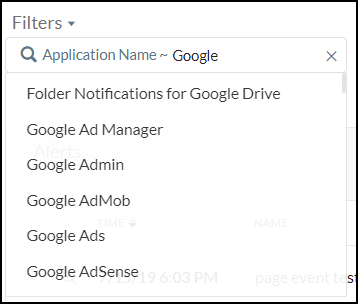
Add Filter lists: To create a filter, click + Add Filter, select what to include what to find in the search, and then click Apply.
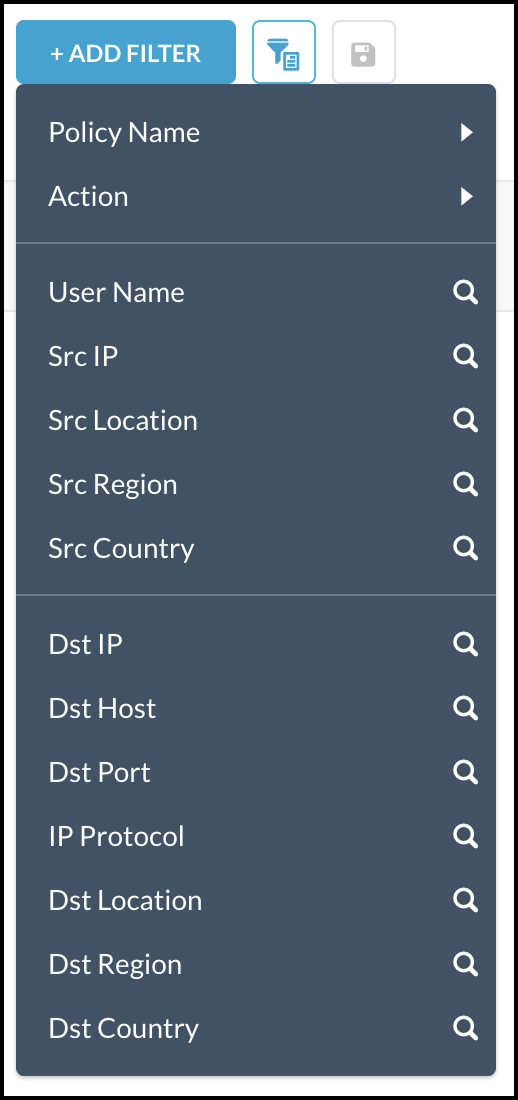
Tip
You can choose multiple items for some options. The options with the
 icon allows you to search.
icon allows you to search.Save Filter button: After adding a filter, you can save it for future searches by clicking Save Filter.

Add to Watchlist button: To add filter values or query strings to a watchlist, click Add to Watchlist.

Query Mode button: Optionally, switch to query mode
 and enter a query in the search field. For example, to specify which app to search for, the domain, and the user's email address, enter the following query.
and enter a query in the search field. For example, to specify which app to search for, the domain, and the user's email address, enter the following query. app eq 'Google Drive' and instance_id eq '<yourcompany.com>' and user eq '<user@yourcompany.com>'
You can pin the query by clicking the pin icon
 to remember the query across the Application Events, Page Events, and Alerts pages.
to remember the query across the Application Events, Page Events, and Alerts pages.To change back to the filter view, click Filter Mode.
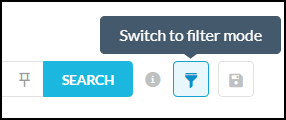
Export button: Click Export to get the entire list of application events. First select the columns to export (those displayed, or specify which columns), and the number of rows, then click Export again. Your column and row selections are retained for future exports.
You will be sent an email with a link that allows you to download the list in CSV format.
Event Details button: Click the magnifying glass icon
 besides any listing to view more details about the page event. The default view shows the page events for the last 7 days unless you change the date range setting.
besides any listing to view more details about the page event. The default view shows the page events for the last 7 days unless you change the date range setting. 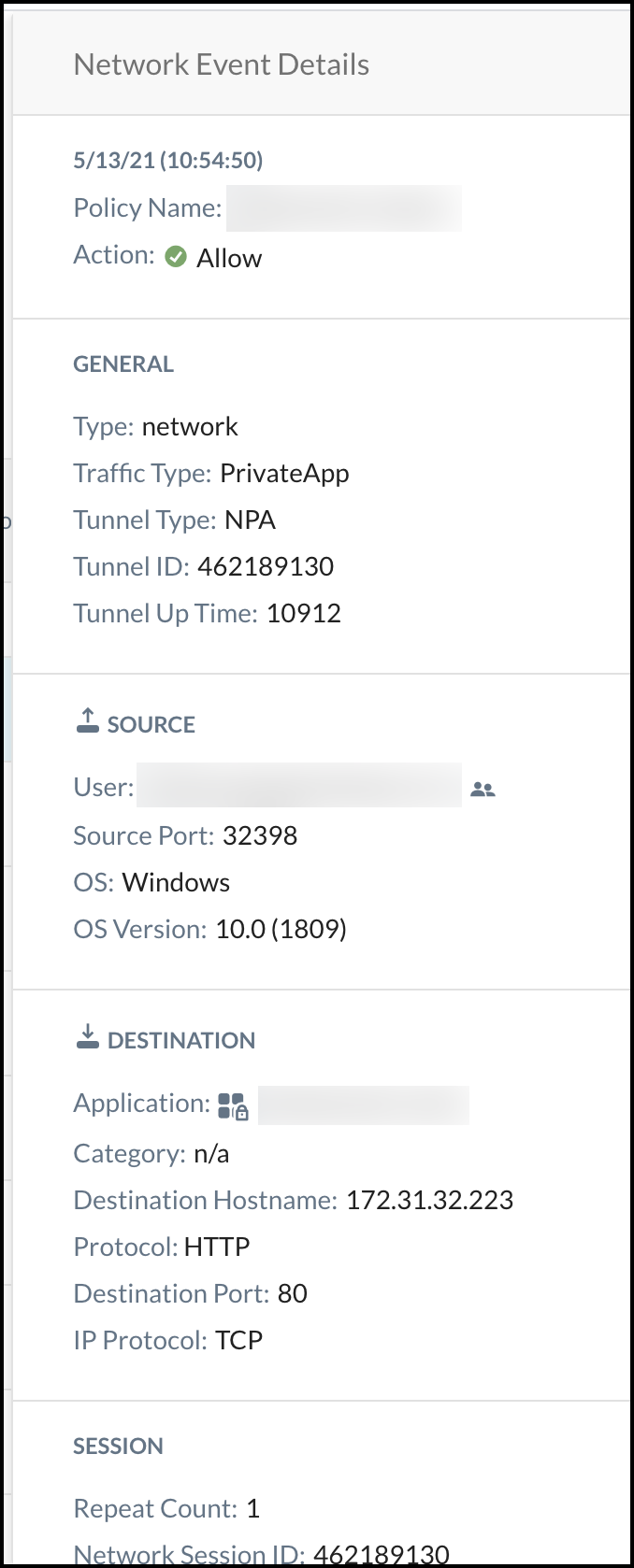
Rows per page list: At the bottom right corner of the page, the Rows per page list allows you to display 10, 20, 30, 50, or 100 rows per page.
Customize Columns
Use the Customize Columns dialog box to specify the information you want to see.
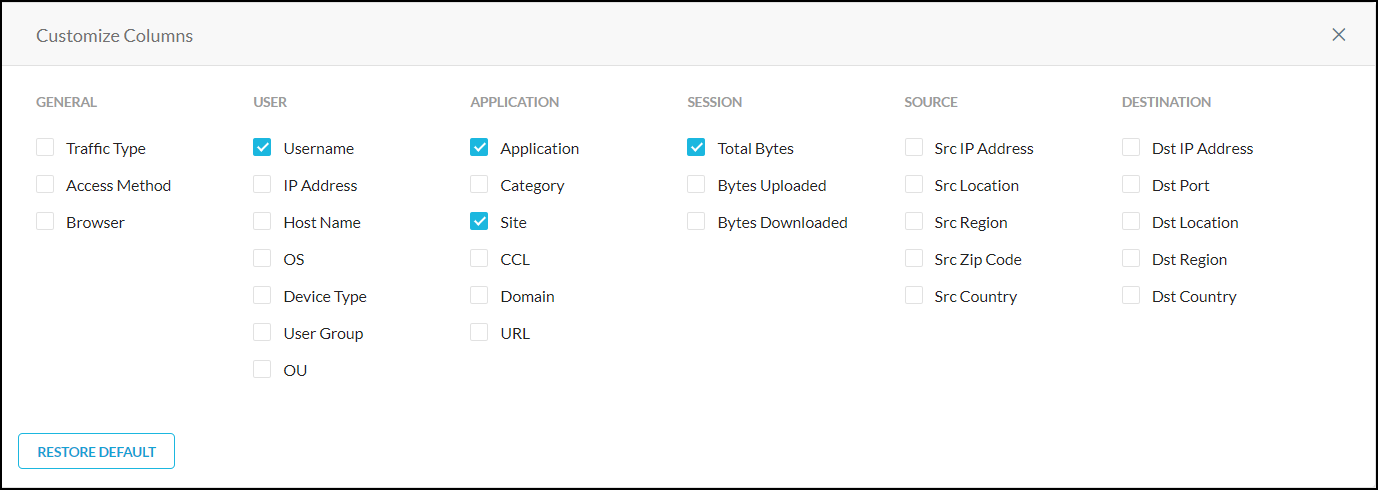 |
General: Includes Traffic Type, Access Method, and Browser information.
User: Includes Username, IP Address, Host Name, OS, Device Type, User Group, and OU information.
Application: Includes Application, Category, Site, CCL, Domain, and URL information.
Session: Includes Total Bytes, Bytes Uploaded, and Bytes Downloaded information.
Source: Includes Source IP Address, Source Location, Source Region, Source Zip Code, and Source Country information
Destination: Includes Destination IP Address, Destination Port, Destination Location, Destination Region, and Destination Country information.
Click Restore Defaults to restore column-related default settings.